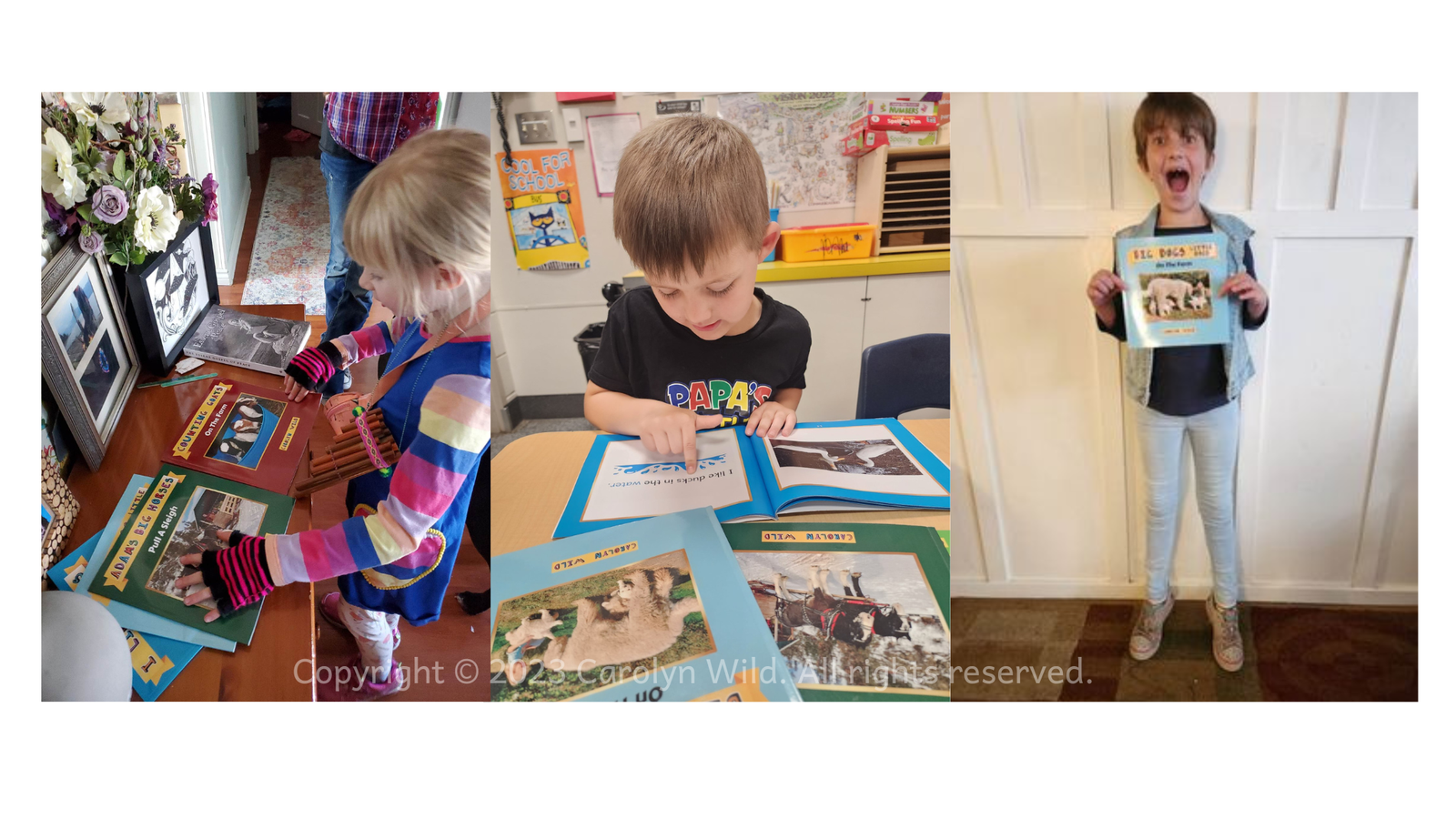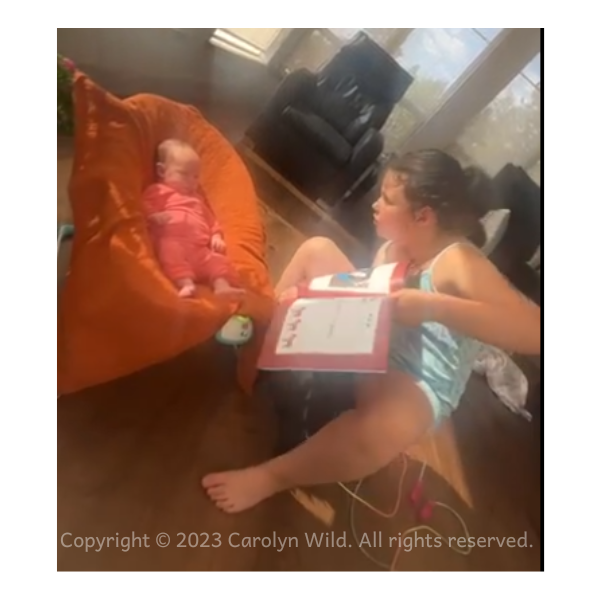

The Benefits of Building a Language-Rich Environment:
Research shows that building a language-rich environment from birth makes a huge difference in learning to speak, read, and write. Reading aloud to your child is a wonderful shared activity you can continue for years to come and it’s important for your child’s brain development. It not only strengthens brain connections but also helps build new ones.
Reading to your children is a great way to spend quality time with them. It lets the child learn more about the world around them, allows children to start thinking more creatively, and engages their imagination. Even if your child is learning the alphabet, reading to them can help improve their skills and teach them more about language.
Reading aloud teaches a child about communication and introduces concepts such as numbers, letters, colors, and shapes. It builds listening stamina, memory, and vocabulary and gives the child information. Reading helps children learn about different people, communities, countries, and the world around them.

When you read with your child they hear you expressing yourself emotionally, which supports both social and emotional development. There is an opportunity for them to look, point, touch, and respond to questions with their gestures, sounds, and eventually words. You can have fun singing nursery rhymes, making funny animal sounds, and enjoying the special time together.
Cuddling with your child while you read helps your child feel safe, warm, and connected to you. Don’t worry about following the text exactly but take the time to pause and ask questions or make comments on the pictures or text. Your child may not be responding yet to questions, but this lays the groundwork for doing so later.
As children begin to speak and build sentences, they learn to recognize sounds and patterns within spoken language. Children learn by repetition and often love hearing or reading the same books repeatedly. As your child matures encourage them to touch and hold the book and show them how to turn the pages correctly. Reading to children can teach them more about language even if your child has just begun to learn the alphabet.
Children who read are constantly employing their concentration skills and it helps them to function better in our society so that they can read instructions, understand signs, and use computers. Reading exposes the reader to new words and increases their vocabulary and it also helps them to develop empathy while experiencing the situation through someone else’s eyes.
Read With Expression
Have fun and read with expression – with the appropriate rhythm, tone, pitch, pauses, and stresses for the text. Reading with expression means reading aloud with feeling. It puts emotion into the words on the page so the listener can understand the author’s intent. When a reader’s voice is expressionless, the text sounds boring so try using different voices for different characters and make the story interesting for the listener.
To gain a comprehensive understanding of the book leveling process and to determine your child’s reading level, I recommend visiting this webpage:
https://carolynwild.ca/what-are-leveled-books/
Books For Emergent Readers:
Picture books hold the attention of children better than books without pictures. Reading picture books with children regularly (ideally daily) can help them learn to self-monitor their behavior and learn to treat books gently until they can sit through a whole story with you.
When the child is getting ready to read they should have simple repetitive sentences with familiar text and clear pictures on each page to help tell the story. Emergent books are dedicated to learning letters, their sounds, and recognition. They have simple short stories, large fonts, and short words that are used frequently. They are repetitive, predictable, and may have rhyming text. There are one or two lines of text on each page of the book and the words are usually decodable words with some sight words. The punctuation is basic and the visuals are clear. This emergent level typically requires adult assistance.
Sight Words Versus High-Frequency Words
Many sight words cannot be decoded, so knowing spelling rules or phonics will not help a child sound out the word. High-frequency sight words are commonly used words that students need to know. Some high-frequency sight words are decodable using spelling and phonics rules, and some are not.
Look for free high-frequency sight word lists on this webpage: https://carolynwild.ca/worksheets/
Start with list #1 of the high-frequency sight words and have fun with the words. Keep the lessons short and you can cut out the words and hide them or hang them around the house or classroom. Don’t move onto the second list until the child knows all the words from list #1.
Rebus Stories and Rhymes
Rebuses have been used to convey messages and simplify communication throughout history. Rebus stories and rhymes are wonderful for children who are just beginning to learn to read. There are pictures instead of words throughout the story and rhyme to assist with learning. This makes reading fun and encourages the love of reading.
 To check the reading level of your book, take this simple test:
To check the reading level of your book, take this simple test:
- Open up the book to a page your child wants to read.
- When your child comes across a word they do not know, have them hold up one finger.
- 0-1 finger – this book might be too easy.
- 1-2 fingers – this looks like a perfect fit!
- 3-4 fingers – give this book a try, but change to a different book if the child is not feeling comfortable.
- 5+ fingers- this book is probably too challenging. This might be a great book to read with someone else or try later after building confidence with other stories.
Learning To Read Guidelines:
- Read books to your child daily starting at birth.
- Point to pictures and words while reading.
- Reinforce left-to-right reading.
- Demonstrate by moving your index finger under each word as you read together.
- If your child is stuck on a word, prompt them to look at the first letter of the word and make the letter’s sound.
- Next, focus on the ending and middle sounds in the word and make predictions.
- Look at the pictures and guess as to what that word could be.
- Give your child a chance to decode the word, but if they continue to struggle, tell them the word so they can continue to read.
- Teach the sight words from the book you are reading because many sight words can be challenging to pronounce and they don’t always follow typical phonetic patterns.
- Talk about what happened in the story and ask what might happen next.
- Ask questions that start with who, what, when, why, or how, and give your child time to think about their answers.
- Keep the reading periods short and enjoyable.
- Remember that reading time is bonding time!

